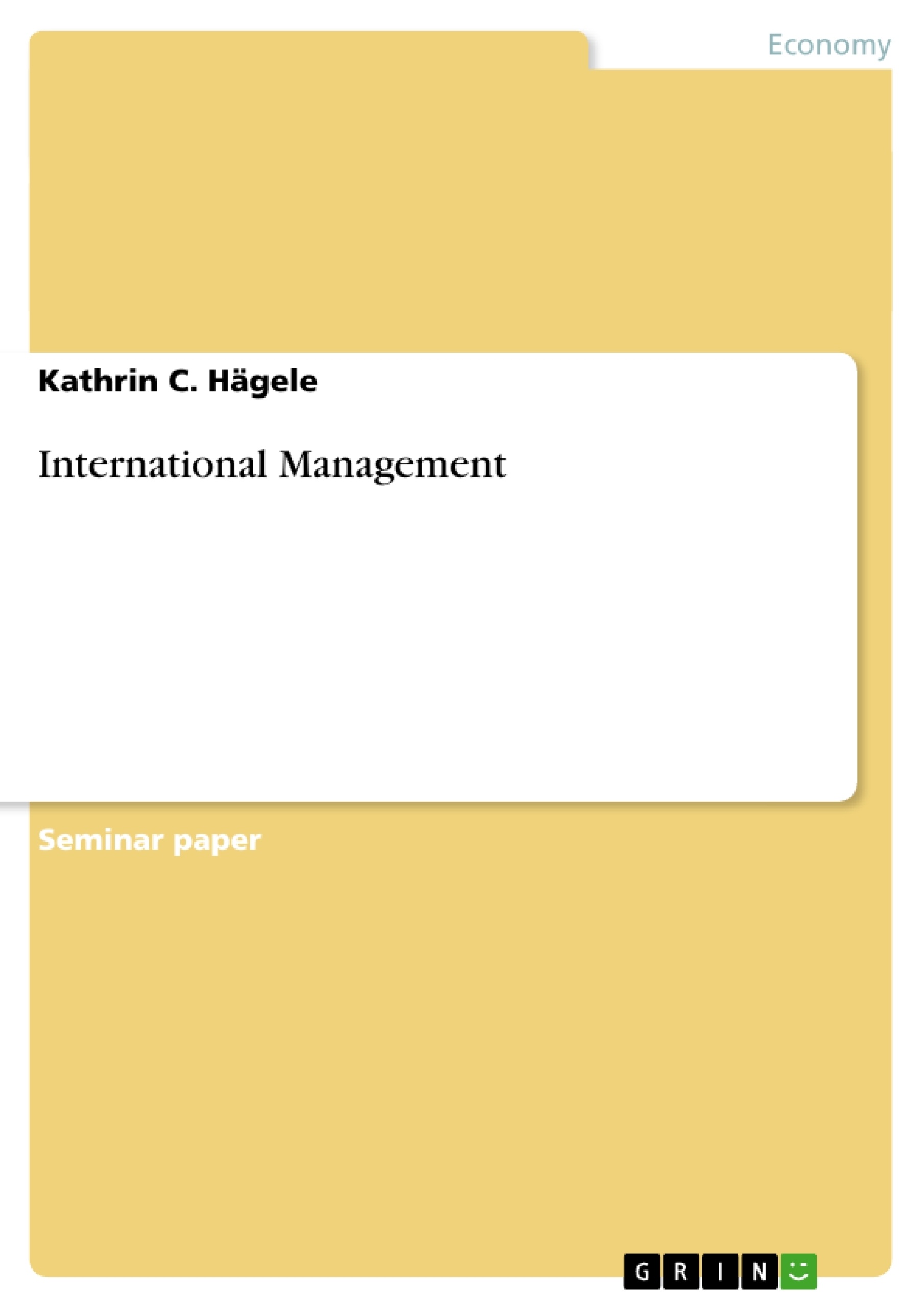Excerpt
Table of Contents
1 Introduction
2 Background Information
3 Global Strategies of Internationalization
3.1 Introduction
3.2 Identify International Opportunities
3.3 Types of International Strategies
3.3.1 International Strategy
3.3.2 Multidomestic Strategy
3.3.3 Global Strategy
3.3.4 Transnational Strategy
3.3.5 Summary
4 Entry Modes
5 Management Problems & Risks
6 Conclusion
1 Introduction
Modern companies are trying to gain an advantage over their competitors. Most of them are finding that a good way to gain such an advantage is through the complex process of going global. By doing so, enterprises can extend their product lines to other countries and cultures. They can also save money on labour costs by taking advantage of the lower standard of living in some countries. Global expansion enables a company to add value by transferring core skills overseas, using global volume to cover product development costs, realizing economies of scale from global volume, and configuring value-creation functions in locations where value added is maximized. Companies pursuing global strategies can gain cost economies by integrating manufacturing, marketing, and competitive strategies across national boundaries, but they must give up a certain degree of responsiveness to national conditions.
This study looks at the strategies companies adopt when they expand outside their domestic marketplace and start to compete on a global basis.
The first chapter starts with a discussion how global expansion creates important values for companies.
The second chapter examines different strategies which companies can pursue in the global arena. These four different strategies are reviewed in detail - the international strategy, the multidomestic strategy, the global strategy, and last but not least the transnational strategy. Furthermore the pros and cons of each of these strategies are debated. In addition the link between the appropriateness of different strategies and the pressures of cost reductions and local responsiveness is made.
In the next section the various basic options a company has for entering a foreign market - exporting, licensing, strategic alliances, joint ventures, franchising, turnkey projects, foreign direct investment, acquisitions and the establishment of a wholly owned subsidiary as well as e-Commerce - are reviewed in detail. Finally, the last section gives a brief summary with important concluding remarks.
2 Background Information
1. Globalisation
There are a lot of definitions of globalisation. The IMF (International Monetary Fund) established under the Bretton Woods Strategy defined globalisation as follows: “the growing economic interdependence of countries worldwide through increasing volume and variety of cross-border transactions in goods and services, freer international capital flows, and more rapid and widespread diffusion of technology”.[1]
Another important institution, the World Bank, also established under the Bretton Woods System, defines globalisation as follows: "Freedom and ability of individuals and firms to initiate voluntary economic transactions with residents of other countries”.[2]
Another definition of globalisation is: “Globalisation is a process of interaction and integration among the people, companies, and governments of different nations, a process driven by international trade and investment and aided by information technology.”[3] This process has not only effects on the environment and on culture but also on political systems, on economic development and prosperity, and on human physical well-being in societies around the world.
2. The History of Globalization[4]
Globalisation is not a new phenomenon. For thousands of years, people - and, later, also corporations - have been buying from and selling to each other in lands at great distances.[5] Globalisation is known since the 19th century. In the year 1961 „globalisation“ was mentioned for the first time in a dictionary. Since the 1980s it is a core term in political and economical discussions.[6]
[...]
[1] http://www.imf.org/external/np/exr/ib/2000/041200.htm 2000
[2] http://www1.worldbank.org/economicpolicy/globalization/ 2001
[3] http://www.globalization101.org/globalization/ 2002
[4] L. Helfrich, Einführung in die Globalisierungsdebatte, p. 3 ff.
[5] http://www.globalization101.org/globalization/ 2002
[6] M. Kastl, B. Rödl, Going Global, p. 12 ff.
- Quote paper
- Kathrin C. Hägele (Author), 2006, International Management, Munich, GRIN Verlag, https://www.grin.com/document/55004
Publish now - it's free























Comments